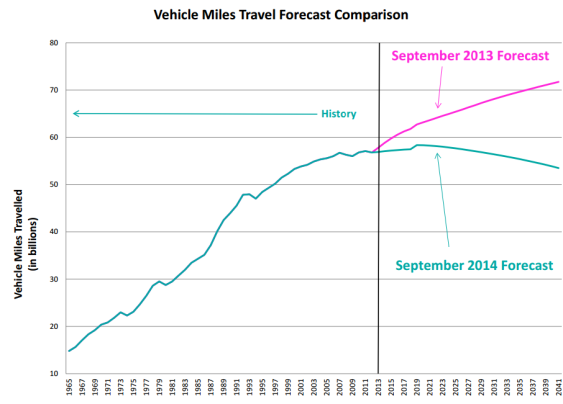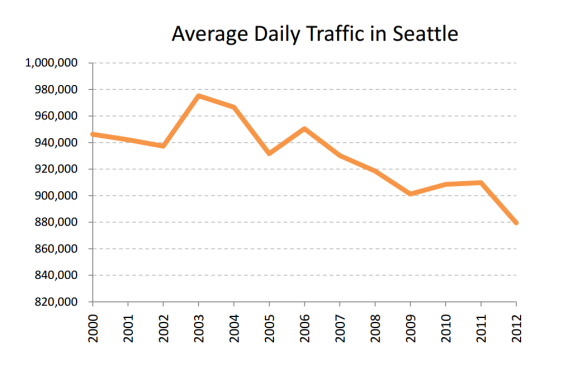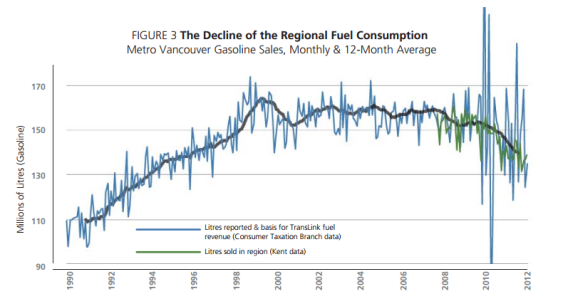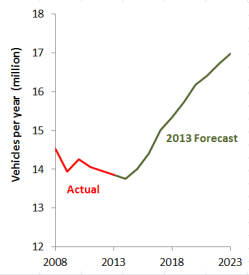The Kitsap Sun is reporting that a $1 per car toll increase on the Tacoma Narrows Bridge west of Tacoma, Washington is “close to a done deal.”
On July 1, rates will rise to $5 for Good To Go! electronic payment, $6 at the toll booths and $7 for pay-by-mail. A déjà vu will occur one year later.
WSDOT believes that if tolls on the bridge don’t rise, there’s a good chance that the state won’t have enough tolling revenue to cover the financing costs for the $728 million second span, which was opened to the public in 2007. Tolling shortfalls, in turn, could force WSDOT to dip into general transportation funds for a project that was supposed to pay for itself.
As the chart below shows, traffic across the bridge has consistently failed keep up with the forecasts. Traffic has been basically flat: despite a modest uptick in 2014, actual traffic volumes (the thick green line) are still about the same today as in 2009.















 But instead of rising steadily, as originally projected, traffic started tapering off. (See the red line to the right.) At first, transportation planners pinned the declines to the Great Recession of 2009. But after rebounding in 2010, traffic across the bridge has fallen slightly for three consecutive years—confounding policymakers, and forcing a series of
But instead of rising steadily, as originally projected, traffic started tapering off. (See the red line to the right.) At first, transportation planners pinned the declines to the Great Recession of 2009. But after rebounding in 2010, traffic across the bridge has fallen slightly for three consecutive years—confounding policymakers, and forcing a series of 